Norse mythology, with stories of the gods and their adventures in the nine realms, are as popular now as ever. Even though the Viking Age ended almost a thousand years ago, their gods live on.
In this post, I will give you an overview of the main events, the nine worlds, the gods and goddesses, and the other beings that populated the myths of the Vikings. I am also looking at some of the most common misconceptions and questions that people have about Norse myths.
For the sake of clarity, I think it wise to start with just what Norse mythology is, and where it comes from.
Norse mythology was a complex set of religious beliefs and part of the culture of the Norsemen, both the seafaring raiders popularly known today as Vikings, as well as all the pagan people, living primarily in Scandinavia in the Viking Age.
This culture and their religion naturally evolved over time and had done so for hundreds of years before the Viking Age. Furthermore it wasn’t really limited to just the Scandinavian countries, but has been traced back to large parts of Northern Europe. However, for the sake of this post, I am not delving into the possible origins of Norse mythology, or how it evolved both over time and geography.
I have also created a Dictionary of Norse Mythology which gives short descriptions on a range of different subjects, covering all manner of gods, animals, jötnar, dwarves, places and more.
The Legacy of Norse Mythology
Part of what I find fascinating about Norse mythology is how so many people are still drawn to it, and the impact it has on popular culture.
With Norse mythology being as popular as it is, it has naturally given rise to a number of misconceptions, wrongly held beliefs and misunderstandings. I will try to dispel some of these, and point to the right answers where they exist.
Creation, Yggdrasil and the Nine Worlds
Part of what I always found fascinating about Norse mythology was the great cosmos at the center of it. There is a remarkable creation myth, and then there are the nine worlds, all nestled within the branches of the cosmic tree Yggdrasil.
However, these stories were passed down orally, and only written down a couple of hundred years after the end of the Viking Age. This has sadly left us with some gaping holes in our understanding of the ancient Norse cosmology.
The Ginnungagap and the first beings
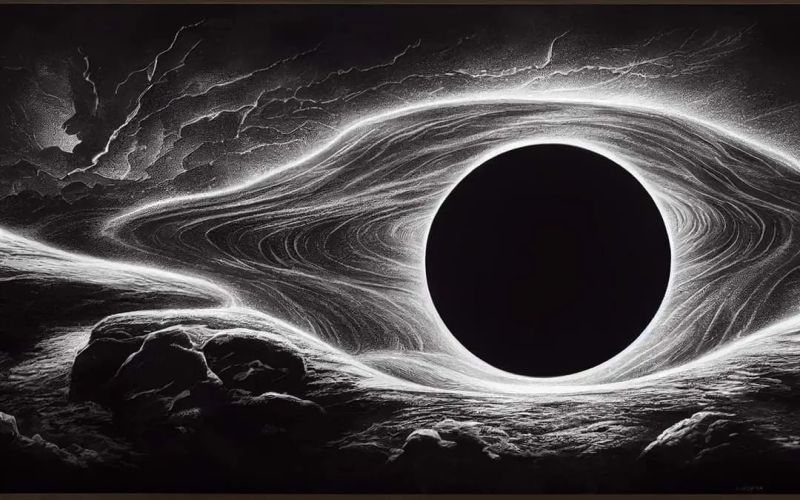
In the beginning, even before time, there was only the Ginnungagap, the “gaping abyss”, or “yawning void” out in space. Seemingly existing on the same plane as the abyss, there were two realms north and south of it. To the north of the abyss was Niflheim, the realm of ice, mist and the eleven rivers of the Elivágar. From their source, the poisonous well Hvergelmír (Roaring cauldron), the icy rivers flowed out into the void.
To the south of the abyss was the fiery realm of Muspelheim. It would become the home of the fire-jötunn Surt and his tribe of fire jötnar. As the icy plains and rivers of Niflheim slowly reached towards the fiery Muspelheim, ice melted into pools out there in the void. Out of one such pool came an immense being to life, Ymir, the first of the jötnar.
Ymir later was accompanied by a cosmic cow, Audhumla which gave him milk to live off of. Just where the cow came from is not mentioned in any surviving poem or saga. Audhumla drew sustenance from licking the ice blocks out there on the plains of the Ginnungagap. From one of these blocks of ice, a man slowly emerged, more and more as the cow licked it.
This was Burí, the primordial Aesir god and ancestor to all the later gods and goddesses. Both Ymir and Buri had children and while some information is given about how Ymir managed this feat by himself, nothing is said about how Buri had his son Borr.
Borr would later go on to take a jötunn named Bestla as consort, she was the great-great granddaughter of Ymir. Together, Borr and Bestla had three sons, Vili, Ve and Odin.
Creation of the Worlds
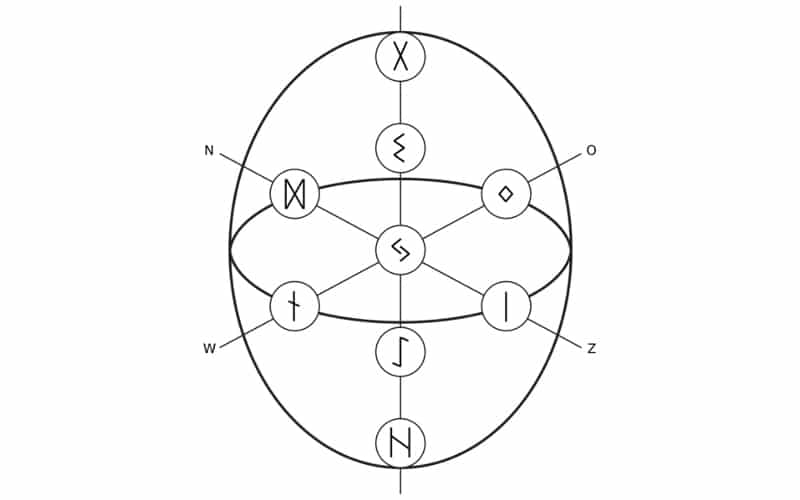
Right from the start of time, the Aesir and the jötnar were in opposition to each other. Just why that was is not entirely clear. However, in a broader perspective, the jötnar is often seen as representing the untamed and sometimes destructive forces of nature, whereas the Aesir stands for order.
Either way, in the end the animosity came to a confrontation where Odin and his brothers killed the giant jötunn Ymir. All but two of the jötnar drowned in the following flood (of blood). They then used the body of the slain giant jötunn to create Midgard, the world of the humans. Bones and teeth became mountains, hair became forests, and his blood became the oceans etc. Surrounding, and protecting Midgard they created a fence, or gard, out of his eyebrows.
This creation myth really only details how Midgard is created. There is a passage covering how the gods built their halls etc. but the realm of Asgard already existed. Little or nothing is said about the creation of the other worlds. There is some discussion about how many realms there really was, and if Hel is part of Niflheim or its own realm. However, these are the commonly recognized realms.
Niflheim – primordial realm of mist and ice
Muspelheim – primordial realm of fire and volcanos
Midgard – world of the humans
Asgard – realm of the Aesir gods
Vanaheim – realm of the Vanir gods
Helheim – realm of (some of) the dead
Jotunheim – realm of the jötnar (also known as giants)
Alfheim – realm of the Lightelves
Svartalfheim – realm of the Dark Elves/Dwarves (also called Nidavellir)
The Giant Cosmic Tree Yggdrasil
Connecting all the worlds is the giant ash tree Yggdrasil which has roots into the lower realms, and carries the higher realms in its branches. It is believed that Yggdrasil really was the name for the Milky Way galaxy and all its shimmering white stars. Like with most ancient people, they turned to their mythology to explain many natural phenomena they observed.
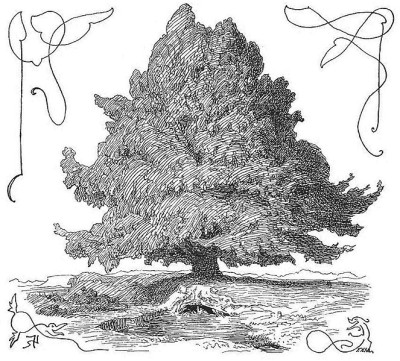
Yggdrasil has three roots which stretch into different realms, drawing water from primordial wells. The three wells are Urdarbrunnr, located in Midgard, Hvergelmir in Niflheim and Mimisbrunnr in jötunnheim.
There is no mention ever of where Yggdrasil came from, or if it was “always” there, like the primordial realms of Muspelheim and Niflheim. Furthermore there aren’t any illustrations explaining how it connects the different worlds. This conundrum is part of the knowledge that has been lost through time as the Viking Age people themselves didn’t write down much.
Gods and Goddesses of Norse Mythology
There are two different tribes of gods in Norse mythology, the Aesir, who are the main ones most people have heard of, and the Vanir, of which there are only a few known.
According to myth, there once was a great war between the Aesir and Vanir. The exact reason for why war broke out is uncertain. However, it might have to do with the burning and attempted killing of a Vanir goddess named Gullveig. She might have been the goddess Freyja, under another name, but that is even less certain.
The two tribes were almost equally matched and the war dragged on. In the end they made a peace treaty, and as part of it, they exchanged ‘hostages’ to live among the other tribe. I haven’t read about this practice in other European cultures, but in feudal Japan I know the great houses might exchange princes as hostages as insurance for lasting peace.
The Vanir Deities
There is a whole story connected with this, both the peace treaty and the hostages. However, this at least led to the three Vanir deities Njörd, god of seafaring and wealth, and his two children Freyja, goddess of love, magic and fertility, and Freyr, god of fertility, prosperity and peace treaties coming to live among the Aesir in Asgard. Other than the possible goddess Gullveig, there are no other Vanir deities ever named.
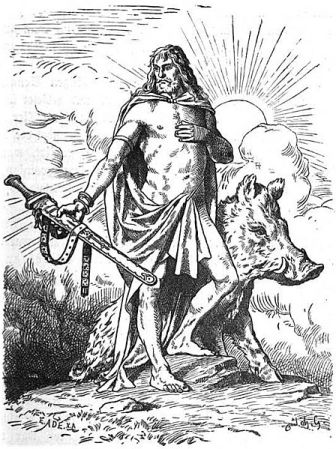
The Vanir tribe is understood as being a nature based tribe, associated with fertility and agriculture. Being deities of wealth and abundance is related to this as both were closely tied to cattle and crops. Njörd was also said to be the richest in gold of all the gods, his hall Noatun being lighted by shimmering gold.
Both Njörd and his son Freyr would marry jötunn women, being great examples of how closely intertwined the gods and the jötnar really were.
The Aesir Deities
The Aesir gods and goddesses are by far the largest tribe in Norse mythology. Among them are all the well known deities like Odin, Thor, Heimdall, Frigg, Eir and the trickster god Loki. When you list all of the Aesir gods and goddesses there are actually more than forty of them. Many of them are direct descendants of Odin, but there are quite a few with less clear origins.
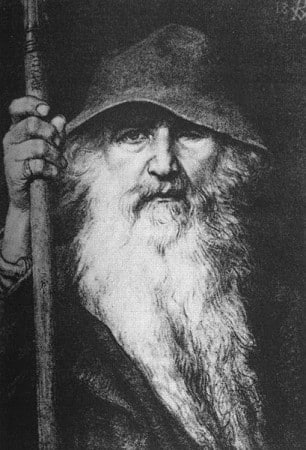
Interestingly, and this is an important point, quite a few of the Aesir gods are half, or even three quarters (as is the case for Thor) of jötunn ancestry. So while the gods and the jötnar are usually pitted against each other, they are closely connected. This goes to show how important the tribe, or clan, was in the Viking Age, and how it might even superseed biological ties.
Among the Aesir deities, Loki is an interesting case where he is clearly accepted as a god, and living among the Aesir in Asgard. However, he has a foot planted firmly in the jötunn camp, fathering Hel, Fenrir and Jormungand with the jötunnn woman Angrboda.
Another interesting point is that the gods aren’t truly immortal, instead they are living forever because of the goddess Idunn’s apples. It is those that give the gods their longevity and without the apples they age and would eventually die. The origins of the apples is never shared, at least not in any surviving manuscript, but I imagine this would have been known back then.
The Jötnar – Untamed Villains of Norse Mythology
The jötnar, often called giants, are the main rivals of the gods and the two groups are often in conflict with each other. They are also the beings you might have heard being called trolls. However, as is often the case in Norse mythology, not all jotnar are giants, or trolls.
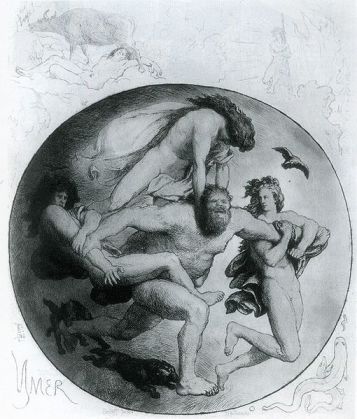
The first jötunn, as I mentioned in the creation story, was named Ymir. He was so large that after killing him, Odin and his two brothers used his body to create the whole world of Midgard. He seems to have been a lot larger than any other jötnar as well since they all drown in the flood of his blood.
On the other end of the spectrum of the diverse jötnar tribe you find Gerdr who was so beautiful that Freyr fell deeply in love with her at first sight. Clearly she was much the same size as the Aesir gods, and exceedingly good looking. In a similar fashion, some jötunn would turn into stone if caught out in sunlight, yet others, like Hrungnir, were made from stone to begin with.
Light Elves and the Dwarves
Another two groups of beings in Norse mythology are the luminous, almost ethereal Light Elves, and their swarthy ‘cousins’ the Dark Elves, also called Dwarves (Old Norse Dvergr).
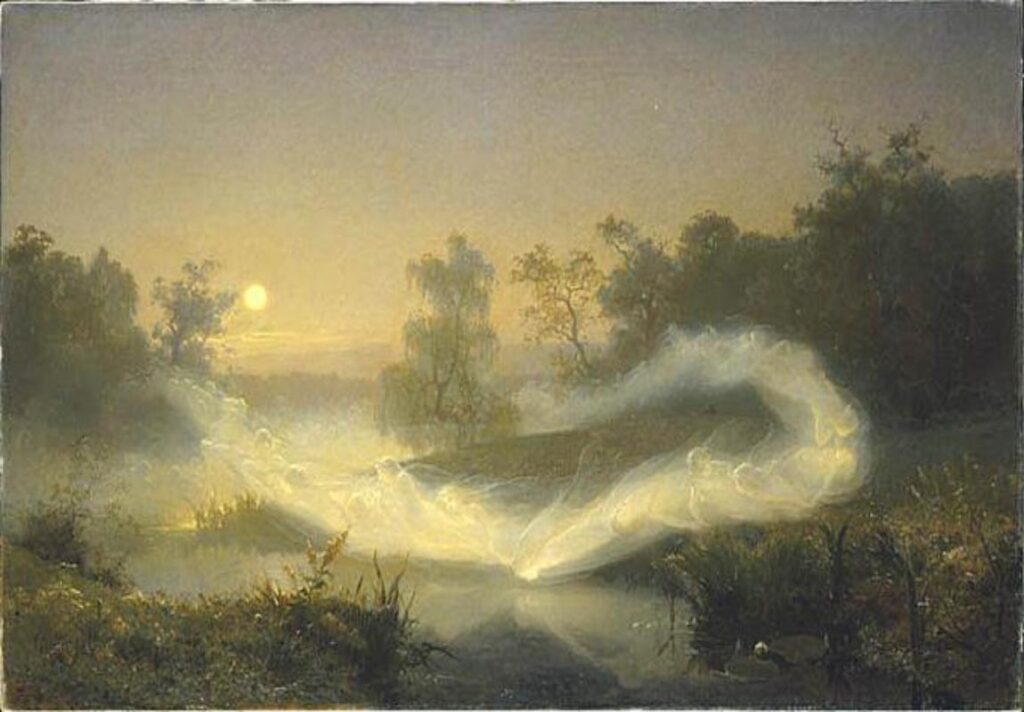
While the Light Elves are seen as benign and forces of good, the Dark Elves are more wily, and not entirely to be trusted. Not much is known about the Light Elves, and other than Freyr for some reason having been made ruler of Alfheim, little is known about their realm.
Dwarves crafted the gifts of the gods
The Dwarves however are much more often part of stories found in Norse mythology. In many myths they are portrayed as master craftsmen, capable of creating all kinds of enchanted weapons and items. Two different pairs of Dwarf brothers actually created most of the famous weapons and artifacts that the gods are associated with, like Thor’s hammer Mjollnir, Odin’s spear Gungnir, Freyr’s ship Skidbladnir and more. When the gods needed to tie down the giant wolf Fenrir, they also turned to the Dwarfs who made a magical unbreakable fetter.
On the other hand Dwarfs also showed their more malicious sides at times and made a magical mead from the blood of the all-knowing Kvasir. In another story, three dwarves traded an especially magnificent necklace, the Brisingamen, with sleeping with Freyja as payment.
In another myth, the Poetic Edda Alvissmal, a dwarf, shows up on Thor’s door demanding his daughter Thrud’s hand in marriage. The reason why the dwarf Alvis was promised Thrud is likely in another myth lost to us, but it was likely for creating some kind of magnificent artifact. Sadly for him, Thor has no plans of giving up his daughter to a dwarf and draws him into a long exchange, biding his time until the sun comes up, turning the hapless Alviss to stone. This vulnerability to the rays of the sun is seemingly not exclusive to some of the jötnar, but also affects some, or all of the dwarves as well.
Valkyries and the Einherjar
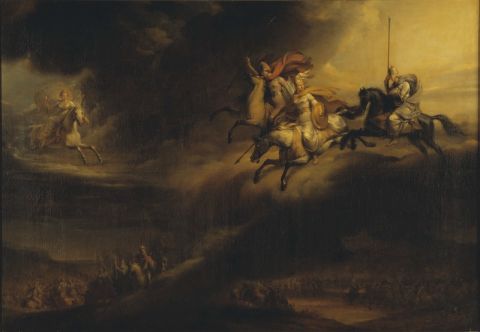
The Valkyries are well known by anyone with even a passing interest in Norse mythology. They are the ‘Choosers of the Slain’, who choose which warriors get to go to Valhalla after a battle. Once there, the fallen warriors will join the ranks of the Einherjar, Odin’s army preparing to fight at Ragnarök.
Most, if not all of the Valkyries are named, and among them, Thor’s daughter Thrud is also mentioned. It is not stated that it is the same Thrud, but it seems highly likely, and as such it seems the Valkyries are recruited from several different groups.
Another famous Valkyrie is Brynhild, who falls in love with the hero Sigurd. Their story ends in deceit, jealousy and tragedy however, not wholly uncommon in Norse mythology sagas. The mortal hero Helgi Hundingsbana also falls for a Valkyrie and they do end up married.
In the Lay of Völund, the Valkyrie Hervor the All-wise marries the master smith Völund. They stay together for nine years, before Hervor and two other Valkyries leave Völund and his two brothers to once again choose worthy warriors fallen in battle.
The warriors themselves, or Einherjar as they are known, live in the great hall Valhalla, hall of the slain. There they fight and battle all day, and feast on mead and pork from the magical goat Heidrun and the boar Sæhrímnir each night. The Einherjar killed or wounded in battle are resurrected at the end of the day, ready to do it all again the next day, forever preparing for Ragnarök. Much in the same fashion, albeit less heroic, the boar Sæhrímnir is also resurrected each day, only to be cooked and eaten again the next.
The Norns – Weavers of Fate in Norse mythology
At the very core of ancient Viking Age belief was that much of your life, and your death was predetermined at birth. Your fate was either carved with magical runes into the roots of Yggdrasil, or in another fashion, weaved as a spell of sorts.
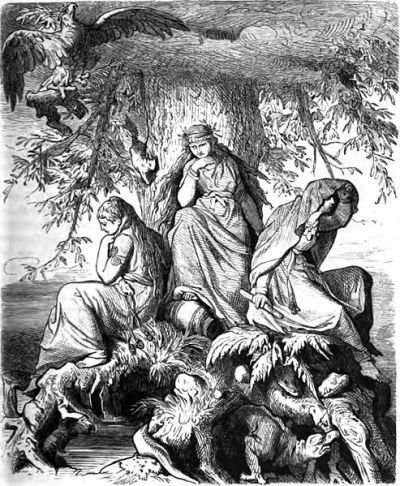
This was done by the three Norns Urd, Skuld and Verdandi, who lived together by Urdrbrunnr (Urd’s well). Not only did the Norns decide the fates of all beings, they also cared for Yggdrasil. Every dsy they were watering it and covering it with a white clay as well. They also care for the swans who live in Urd’s well, who are the ancestors of all living swans.
While the Norns could be unforgiving, they seem to have been more or less benign. Even open to guide the gods, or Odin, when he sought their advice. Urd’s well was also where the Aesir (and the three Vanir) met each day to hold counsel. Under the mighty branches of Yggdrasil they decided in all matters large and small.
The three Norns by Urd’s well are likely three jötunn sisters, who somehow took on the responsibility, and power as the weavers of fate. There are no stories which relate just how this happened. However, it is said that there are other Norns living as well, although what they do is uncertain. Personally I think they might also be involved in much the same, deciding humans’ future at birth, traveling around Midgard.
Loki’s Monstrous Children
Loki, who is half jötun, yet identified as an Aesir god, is central to many of the poems and events that shape Norse mythology. This is especially so since he fathers most of the monsters of the myths, and fights alongside them in the final battle of Ragnarök.
Like several of the gods, Loki has a jötun consort, besides being married to the Aesir goddess Sigyn. His jötun lover is named Angrboda, and together they have at least three children, Fenrir, Jormungand and Hel.
The trio of Norse mythology monsters grows up to be the biggest monsters in the myths, and the world encircling serpent Jormungand is Thor’s nemesis. In the end, the two will actually kill each other, possibly a battle Thor would be happy with. Fenrir, the giant wolf, kills Odin, and is then killed by his son Vidar. Hel on the other hand, the half dead/rotten, half alive ruler of Helheim is not mentioned, and you might assume she survives Ragnarök.
Afterlife in Norse Mythology – Hel and Valhalla
In the mind, and life, of the people of the Viking Age, the gods were all around them. Along with the ever present gods were other beings as well like the dwarves and norns. The gods could be angered, but also appeased or even recruited to support you in a battle for example.
As an extension of their belief in the gods, and the different realms, was a belief in what happened to people when they died. Death was the end of one journey, and the beginning of the next, in the afterlife.
Warriors went to Valhalla (not all though)
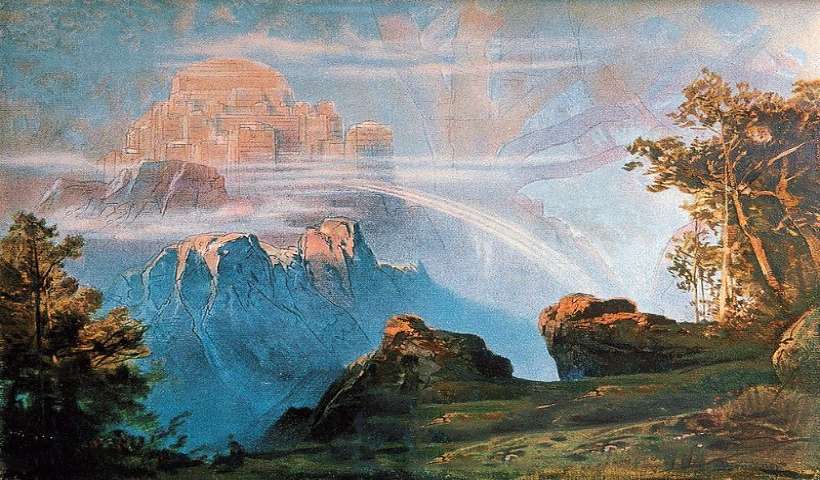
Just where you would spend the afterlife however wasn’t entirely certain. While warriors hoped to go to Valhalla, not all would end up there, only the best and bravest would go on to become an Einherjar. The warriors who didn’t go to Valhalla were likely thought to end up going to Hel. However, Hel in Norse mythology shouldn’t be equated with modern day hell. It wasn’t implicitly unpleasant, or necessarily a torment, although it could be.
Ordinary people went to Hel
All kinds of people went to Hel, young, old, sick, and just unlucky warriors, not to mention slaves who would be their masters slaves in the afterlife as well. To ensure a comfortable existence in the afterlife, people were buried with tools, animals, slaves and treasure, based on the belief that what was buried with them would come with them to the next realm. This also meant that treasure you buried, would be yours in the next life, like an afterlife bank account.
The drowned went to Rán and her daughters
Seeing as sailing and going out fishing was common, most likely quite a few people drowned. They were believed to be ‘pulled under’ by Rán and her net. She is the goddess of the sea, or by one of her nine daughters who were personifications of the waves. Being caught in their net meant you would lose your soul to Rán.
Exactly what that meant to where you went is more uncertain. It might be you were caught in some unforgiving place, having lost your soul. To stay alive, or be treated fairly if you were to drown, some would bring a gold coin with them on a journey across the sea. This is a little like how the ancient Greeks would bring a silver coin to pay Charon, the ferryman, to ferry them over the river Styx.
Did Freyja Get Half of the Dead in Battle?
There is a fourth place some people refer to as a possible destination for fallen warriors. That is Freyja’s hall Sessrumnir, located in the field Folkvangr in Asgard. This notion is debated as there is no conceivable reason for the Vanir goddess Freyja to amass an army. Nor is there a reason for Odin to let her get first pick of all fallen warriors.
Personally I believe there is some confusion behind this. Possibly since Freyja at some point might have been another name for, or have evolved from Odin’s wife Frigg. This is part of what makes Norse mythology interesting, it was evolving differently over time and regions in Northern Europe.
When trying to focus solely on what was “right” during the span of the Viking Age, I believe Freyja was a leader of the Valkyries. As such, she picked first which warriors would go on to join the Einherjar.
Ragnarok – The Twilight of the Gods
Like most things, the end of the gods was prophesied and it was a fate the gods could no more escape then humans could escape theirs.
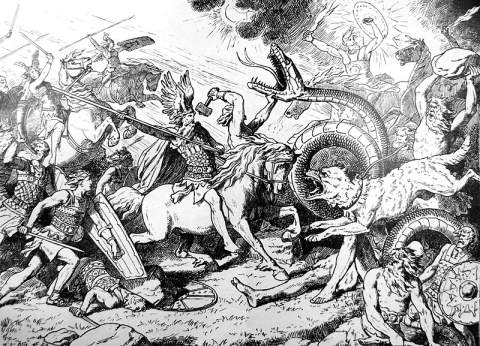
In Norse mythology, the end times of the gods (and humans) are called Ragnarök, ‘Twilight of the gods’. It would be a final battle between the forces of good and evil. Fought between the gods and the jötnar along with their monsters.
The prophesied Ragnarök is what draws Odin to seek knowledge about everything from the runes to spells and the future. It is also why he is building up the army of the Einherjar. They are forever training for that fateful day when the jötnar, Loki’s monstrous children, and armies of the dead commanded by Hel will attack.
Alongside the goddess of death and her legions of the undead, she will be joined by her two monstrous brothers. The serpent Jormungand and the world-devouring wolf Fenrir. Also in the battle will be the fire-giant Surtr who in the end will burn the earth after killing Freyr.
Life Starts Anew
While Ragnarök is an apocalyptic event, some people along with some of the gods will survive it. However, most of the gods die, taking out both Odin, Heimdall, Tyr and Thor. Nothing is said about any of the goddesses, but it’s likely they were expected to die as well.
Thor’s sons, the half-brothers Magni and Modi do survive, and the dead Baldur and Hodr are both resurrected. Another survivor is the Vanir god Njörd, who it is said will return to his homeland Vanaheim. Based on that, it’s safe to say that the realm of the Vanir also survives the apocalyptic end of worlds.
Misconceptions and Questions Regarding Norse Mythology
There has been a great revival of interest in all things Viking Age and Norse mythology. With it there are also a lot of both questions and misconceptions out there. I will try to address some here, and also explain why some are impossible to answer or dispel.
Since people in the Viking Age didn’t write much down, what we know today is collected from only a few written sources, and from a number of rune stones, and other artifacts. The upside to this is that many things are well documented facts. However, other things are simply not rooted in any factual material whatsoever.
The difficult cases however, like whether or not Freyja for some reason collected half the dead before Odin to build up her own giant army, doesn’t have clear and simple answers. Here one needs to make educated guesses. As such, be open about them being a personal belief, not a documented fact.
Common Misconceptions
Vikings wore horned helmets.
- There is no historical evidence to suggest that Norse warriors wore helmets adorned with horns in battle. Also, why on earth would they?
Loki is Thor’s brother.
- Loki is actually a blood brother to Odin, not Thor. Making him more of an uncle or a close familial ally to Thor.
The Norse gods were immortal.
- Unlike gods in some mythologies, Norse gods were not immortal. They could age and were destined to die at Ragnarök. Both Baldur and Hodr die long before that. Without Idunn’s life giving golden apples, all of the gods would likely die.
Valhalla is the only afterlife destination.
- Norse mythology describes several afterlives, including Helheim for those who did not die in battle. Another is having their souls snatched by Rán or her daughters for the ones who drowned.
The “Vegvisir” symbol is Norse and from the Viking Age
- While popular, the Vegvisir symbol does not stem from the Viking Age Norse culture. As such it was not used by anyone in that time. It was actually created some time in the mid 1800’s by Icelandic Christians playing at magic and occultism.
All Scandinavians were Vikings
- Contrary to popular belief, ‘Viking’ was something people did, not were. Like going raiding, they were going ‘viking’. Those people could call themselves a vikingr, ie. a raider. Not all people, or men of the time, went raiding though, some would primarily, or exclusively have other professions. If needed, a chieftain/jarl, might call on people to come along in a battle, or on a raid.
Frequently Asked Questions
Odin is considered the chief of the gods, known as the Allfather. However, both Tyr and Ullr might have been seen as leader of the gods at one point.
Ragnarök is the prophesied apocalypse in Norse mythology. Involving a great battle, the death of major gods, and the emergence of a new, reborn world.
Yes, there are several prominent goddesses, including Freyja, Frigg, and Eir.
Yggdrasil, the cosmic World Tree, connects the Nine Worlds and is central to Norse cosmology. It also holds a deeper significance, being where the Norns carve people’s fates, and keeping the gates of Hel closed.
No, they believed you would live/move on to another realm where you would live on. They didn’t believe you could be reborn into the world you left though.
The Norse believed in a concept called “wyrd,” which can be understood as fate or destiny. The Norns, mythical beings, wove the fate of all beings. With this predestined fate came (for some) a great freedom to be fearless in battle. If you were going to die there was nothing you could do about it anyways.
